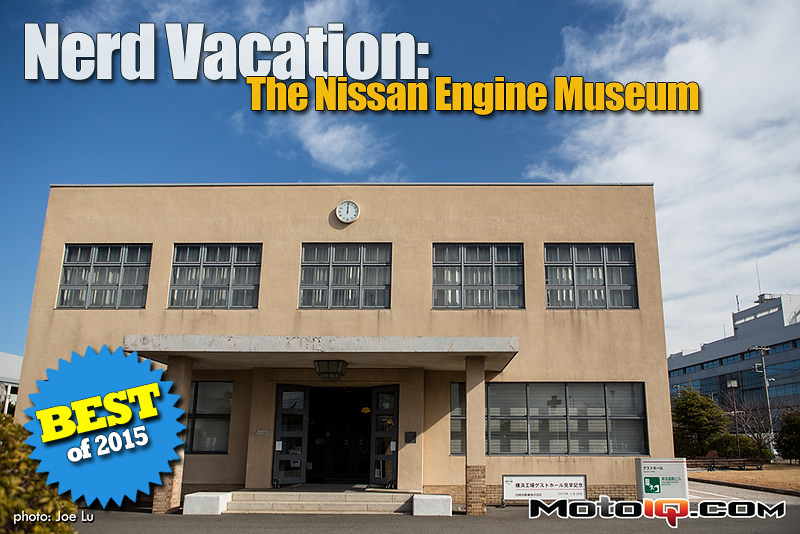,
 As you can see, the initial casting on the right is far from finished, with rough edges and casting marks still needing machine work. An interesting feature of this engine block is the integrated coolant pipe that has been cast into the block. In this photo, it is visible on the more finished block as the ledge that juts out of the block.
As you can see, the initial casting on the right is far from finished, with rough edges and casting marks still needing machine work. An interesting feature of this engine block is the integrated coolant pipe that has been cast into the block. In this photo, it is visible on the more finished block as the ledge that juts out of the block. An example of the sand core that is used in the casting process to create the coolant passages within the block.
An example of the sand core that is used in the casting process to create the coolant passages within the block. Nissan also showed the evolution of their engine manufacturing technologies, starting out with the cast-iron workhorse Z24 engine, the precursor to the KA24, another engine that we're all familiar with and may have pulled out of a 240 or two.
Nissan also showed the evolution of their engine manufacturing technologies, starting out with the cast-iron workhorse Z24 engine, the precursor to the KA24, another engine that we're all familiar with and may have pulled out of a 240 or two. This one I'm sure will look familiar to many of you, the SR20, whose blocks were produced using older low-pressure die casting technology.
This one I'm sure will look familiar to many of you, the SR20, whose blocks were produced using older low-pressure die casting technology. Lastly, an MR20, the newest of the trio, produced using high pressure die casting. The advantages of high pressure die casting are numerous, from increased accuracy to the ability of thinner walls and more complex shapes to be produced in comparison to low pressure casting.
Lastly, an MR20, the newest of the trio, produced using high pressure die casting. The advantages of high pressure die casting are numerous, from increased accuracy to the ability of thinner walls and more complex shapes to be produced in comparison to low pressure casting. And, a side by side view of two different Nissan engines, a direct injection diesel YD22 on the left and a gasoline MR20 on the right. The diesel engine can be identified by its lack of combustion chambers on the cylinder head. Essentially, the combustion chamber has been designed into the geometry of the piston's crown. It's deep bowl helps promote tumbling and swirling of the air fuel mixture.
And, a side by side view of two different Nissan engines, a direct injection diesel YD22 on the left and a gasoline MR20 on the right. The diesel engine can be identified by its lack of combustion chambers on the cylinder head. Essentially, the combustion chamber has been designed into the geometry of the piston's crown. It's deep bowl helps promote tumbling and swirling of the air fuel mixture. 


